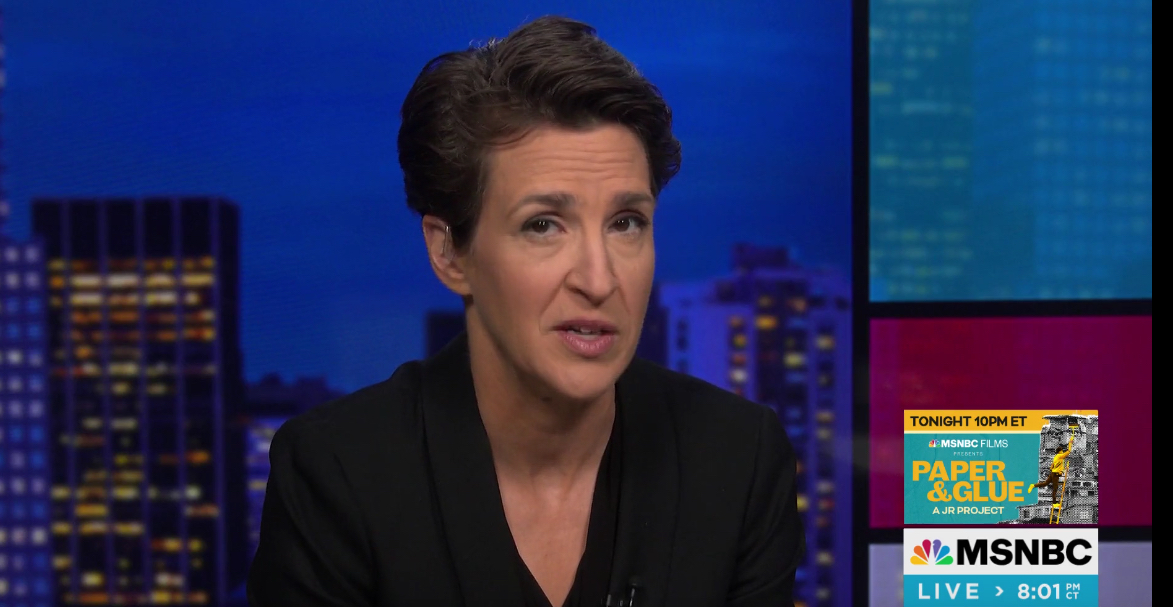For Cable News, Real Disruption Finally Arrives
What will CNN Plus with Chris Wallace look like? Where will Brian Williams and Rachel Maddow end up? What will David Zaslav do to CNN? How long will Jeff Zucker hang around? Columnist David Bloom looks at all the top stories

Chris Wallace’s departure last week from Fox News — where he’d been the top-rated cable outlet's most visible and respected “hard news” journalist for 18 years — for an unspecified role on CNN’s planned streaming service is a big deal, coming at a pivot point for both the big cable networks and resurgent local broadcast operations.

Both are negotiating the transition to streaming, well behind their corporate colleagues on the entertainment side, but positioned to use the same infrastructure to deliver news in new ways to more highly defined audiences wherever they may be watching. Consider the recent moves as initial steps toward a suddenly fast-approaching streaming news future.
Wallace, a second-generation TV news star, is one of the first big-dollar personalities signed to Jeff Zucker’s planned subscription service CNN Plus. Another rumored addition is Brian Williams, who signed off his late-night slot at MSNBC Thursday after more than a quarter of a century with NBC News. Williams said he planned to return to the public eye in some form in the future.
Joining Williams and Wallace at the exit door are MSNBC’s Rachel Maddow, who wants to work on bigger projects, and CNN’s Chris Cuomo, fired last week for excessive involvement in his politician brother’s defense from sexual-harassment accusations.
The big 24/7 news outlets have been slow to embrace the massive changes hitting broadcast and cable TV, in part because they remain so lucrative as a crucial pillar of the pay-TV ecosystem. But all of that is in doubt as cord-cutting erodes the bundle’s economics. Sitting tight as the status quo crumbles isn’t a viable long-term strategy.
“(Streaming news will hit) critical mass likely within three to five years,” said Steve Ridge, former long-time COO at TV news consultants Magid before becoming executive VP last year of the TV News Group at market research firm Screen Engine/ASI. “It’s going to reach a point where it tips over. The content and distribution alignment are being formed now. Everybody is willing to bet on the come for a little while.”
Big changes are coming at the local level, too, as increasing reliance on trusted local broadcast news during the pandemic has fueled a broader resurgence, Ridge said.
NEXT TV NEWSLETTER
The smarter way to stay on top of the streaming and OTT industry. Sign up below.
Screen Engine testing in 30 markets found that the pandemic actually increased the value to many viewers of so-called hyperlocal news about “COVID, masking, what's happening in schools, everything to do with that. It used to be people watched the local news for the weather. The intensity (of viewer engagement) has really gone up.”
Local news remains a hotly contested space, boosted by broadcaster groups that have extended and aggregated their presence through online outlets such as Scripps’ Newsy, Sinclair’s STIRR and Gray TV’s VUit. The biggest broadcast chain, Nexstar, has struggled in its initial transformation of the former WGN cable superstation into NewsNation, but represents yet another player.
VUit released a study Tuesday that found that its audiences were most interested in news about weather and climate, as former residents stream updates on their old home town amid disasters such as Hurricane Ida and last weekend’s devastating blitz of Midwest tornadoes. High school sports continue to be popular too.
Of particular note: VUit’s most-watched station in 2021 was KTSF, which streams in several Asian languages for audiences that likely are poorly served by English-language services. Similarly, Univision just launched Noticias Univision 24/7, its streaming news service with breaking stories, opinion and other material for Spanish speakers. Noticias is part of Univision’s PrendeTV linear ad-support service.
Ridge said both KTSF and Noticias show how news likely will get far more niche in the future, enabled by streaming’s power to serve tightly defined slices of the audience.
“There will be more niche plays, as the menu gets bigger,” Ridge said. “In some cases, you get tremendous scale, but in other cases, as long as costs aren't out of whack, you can get a return on investment” with a niche news streaming service.
Fox News, MSNBC and CNN all ace plenty of decisions over both short- and long-term issues:
Who replaces Maddow, Williams, and Cuomo? How soon do companies shift to streaming, and what does that mean for their lucrative pay-TV deals? Do they continue to spotlight personality-driven news opinion shows (the pro wrestling of TV news), or do they shift back to their straight news roots (MSNBC splits the difference in its advertising of Shepherd Smith’s early-evening news show).
“I do think there is some inherent value in some of these big brand names, such as [Chris] Wallace or Rachel Maddow or Brian Williams,” Ridge said. “That's one path [for big news outlets of the future]. But (recent departures) also means opportunities for others to move up or over. This is really a big chess game, is what I would say. There’s going to be a lot of moving pieces that are going to be head turners.”
Ratings slid badly in 2021 for all the 24-hour cable news networks, in part because of a typical post-election decline in viewer interest, but also fed by pay-TV’s ongoing decline.
Nielsen data says CNN total prime-time viewership is down a whopping 70% from last year, dropping to last among the Big Three, though it’s still second in the 25-to-54 demographic that advertisers covet. MSNBC is down 52% overall, and Fox News has dropped 34%.
Those brutal declines may occasion further rethinking. David Zaslav, slated to become CEO of future CNN/CNN Plus parent company Warner Bros. Discovery, has been quoted saying he wants to make the combined company “a world leader in news.”
Zaslav boss John Malone, a future WBD board member, told CNBC last month that he "would like to see CNN evolve back to the kind of journalism that it started with, and actually have journalists, which would be unique and refreshing.”
If that’s the case, CNN Plus appears to at least be making a significant investment, hiring “hundreds” of producers, contributors, developers and other employees. The service is trying to next quarter but may be challenged to meet that timing.
Once it arrives, what happens to CNN, and how does it maintain its existing pay-TV deals? Will CNN Plus be more like Fox Nation, the Fox News subscription service that provides lifestyle programming for the network’s most ardent fans?
Will CNN/CNN Plus stay the course with highly partisan and entertaining evening opinion commentators, which is the Fox News model? Or will they revert to a more news-focused, just-the-facts approach? And how to drive audience engagement and signups even as parent WarnerMedia goes through yet another earthshaking corporate transformation?
How long will Zucker, a former colleague and long-time Zaslav pal, stick around after CNN Plus launches, especially if the merger review process stretches out for months? Will Zucker take over a broader portfolio of news outlets and sports, including Discovery’s big Eurosport division that owns European Olympic rights?
Lots will need to be decided in coming months, and not just for CNN Plus. But Ridge said it’s an exciting time for TV news organizations trying to figure out where they fit in as part of a transforming sector.
“Just three years ago, there was incredible skepticism about the future, but I think we've turned the corner,” Ridge said. “It's an exciting time, There are just very high awareness, curiosity. consumers are engaged in the process. Technology continues to change. It really is sort of a revolutionary period.”
David Bloom of Words & Deeds Media is a Santa Monica, Calif.-based writer, podcaster, and consultant focused on the transformative collision of technology, media and entertainment. Bloom is a senior contributor to numerous publications, and producer/host of the Bloom in Tech podcast. He has taught digital media at USC School of Cinematic Arts, and guest lectures regularly at numerous other universities. Bloom formerly worked for Variety, Deadline, Red Herring, and the Los Angeles Daily News, among other publications; was VP of corporate communications at MGM; and was associate dean and chief communications officer at the USC Marshall School of Business. Bloom graduated with honors from the University of Missouri School of Journalism.

